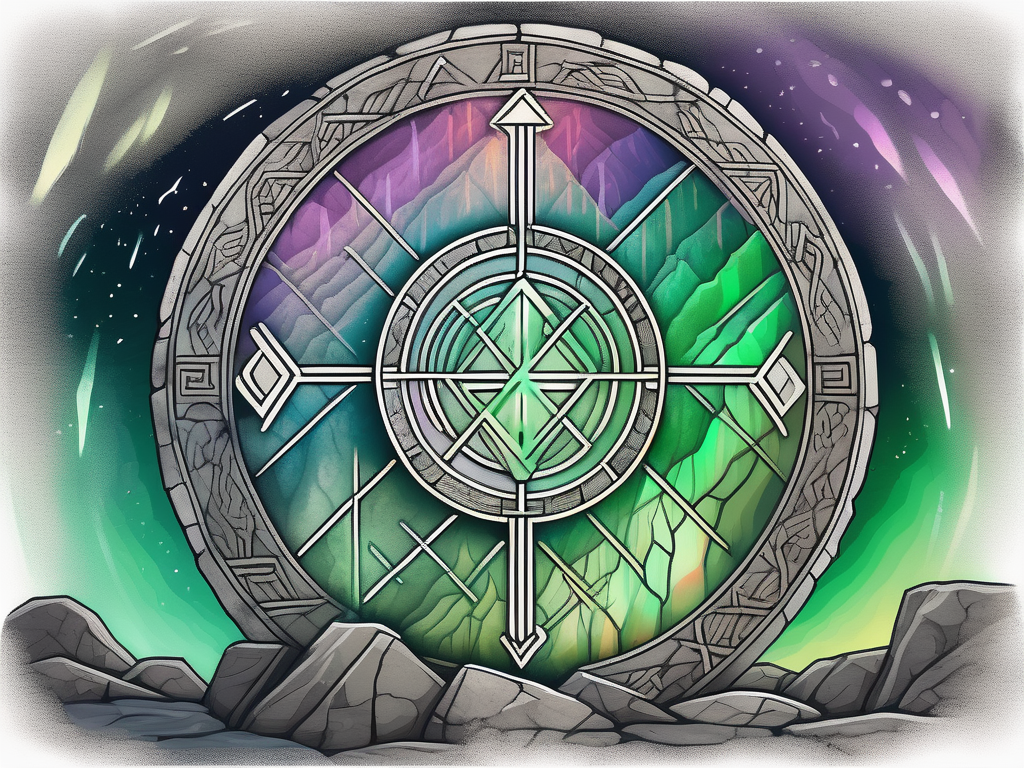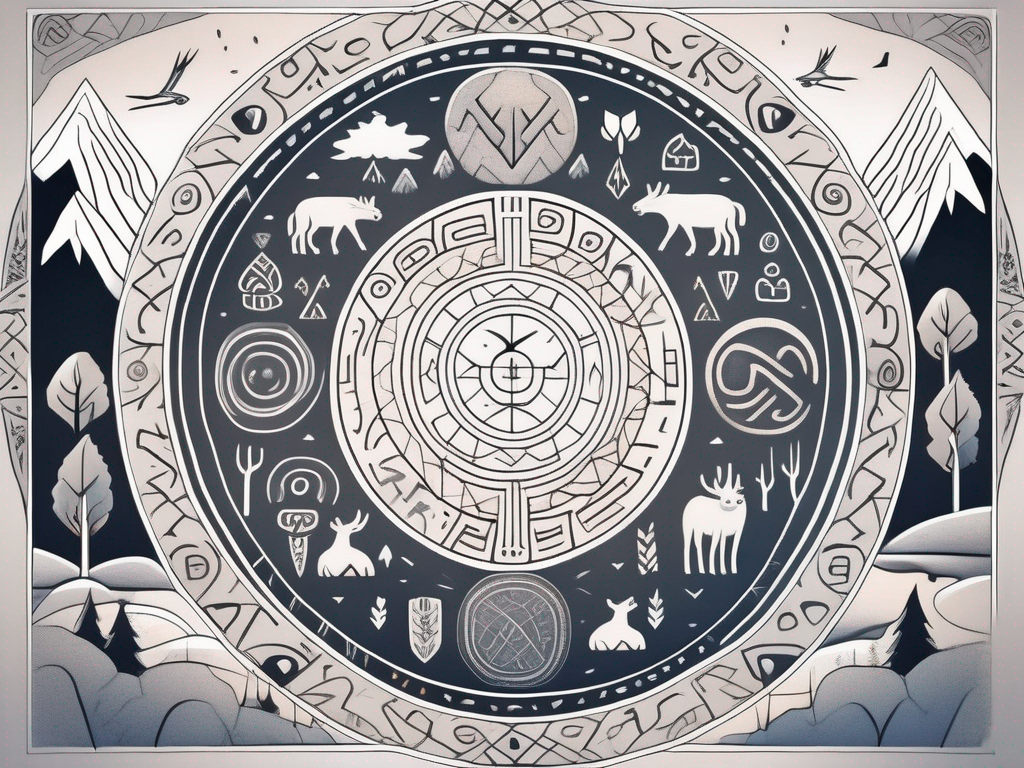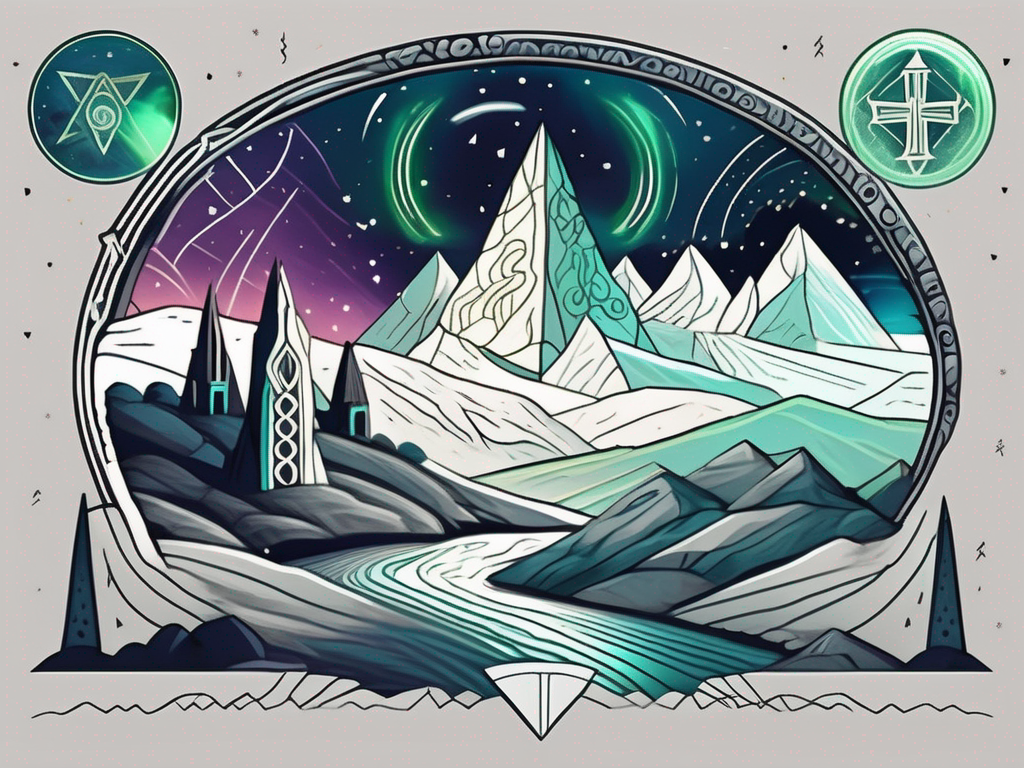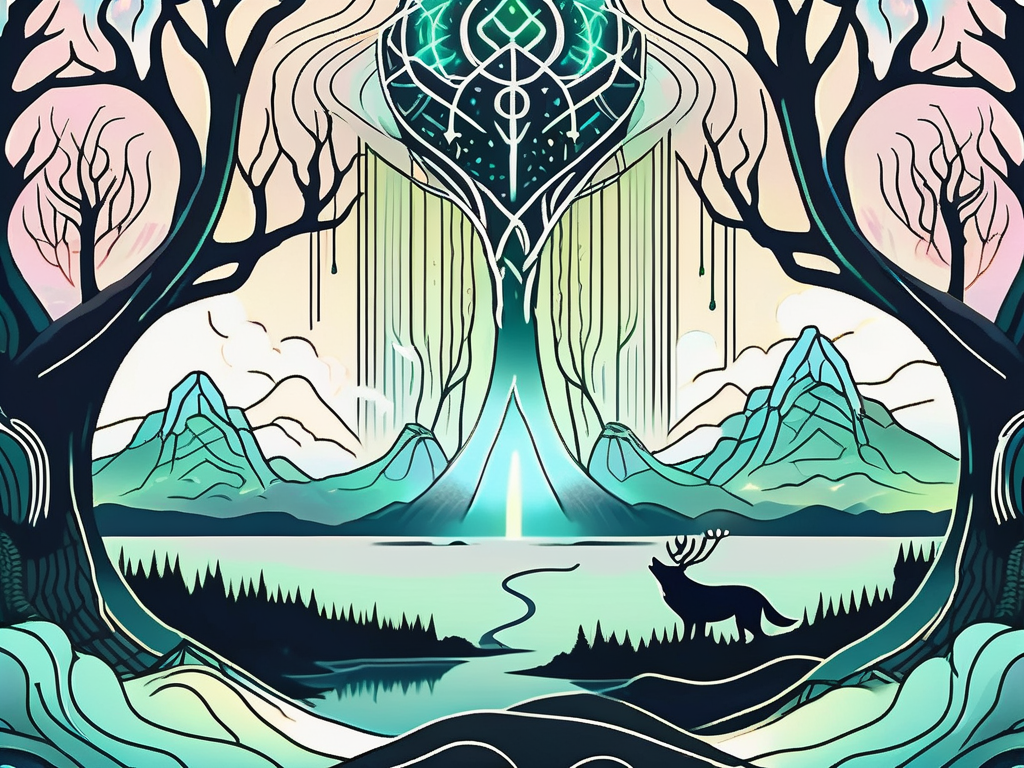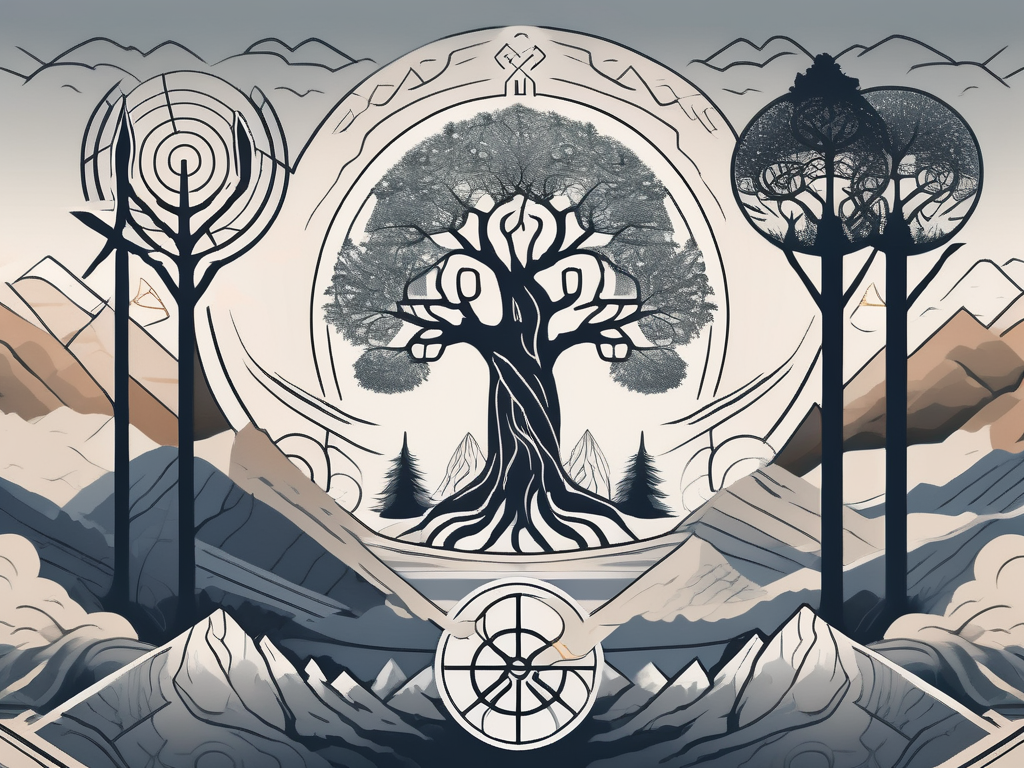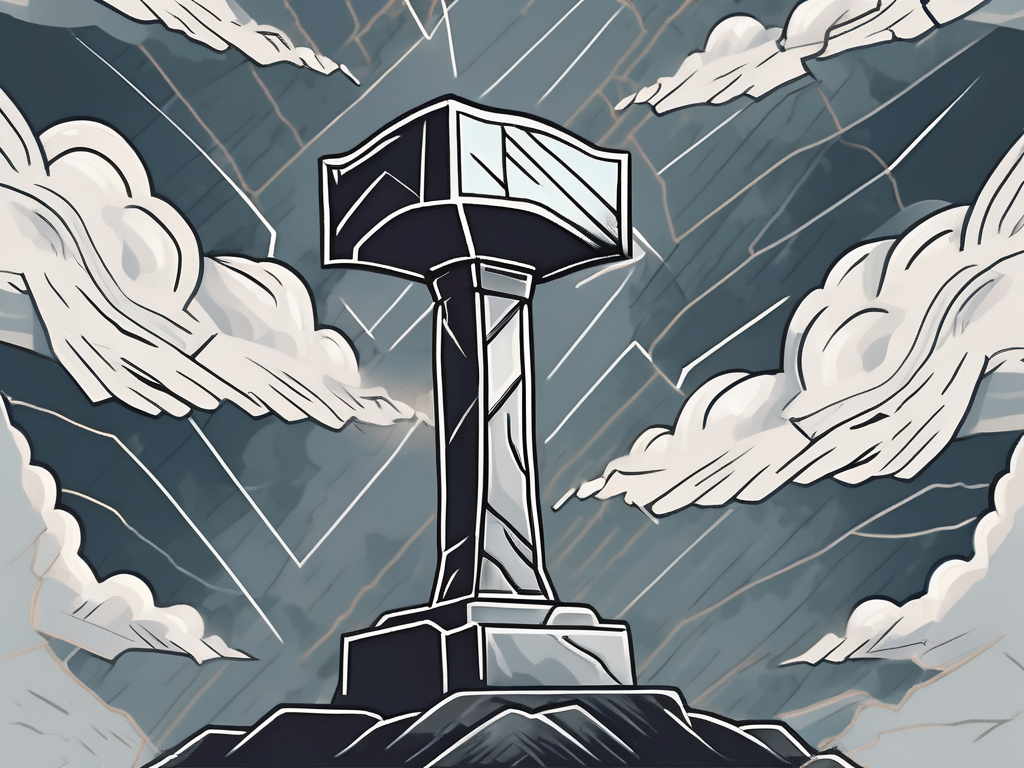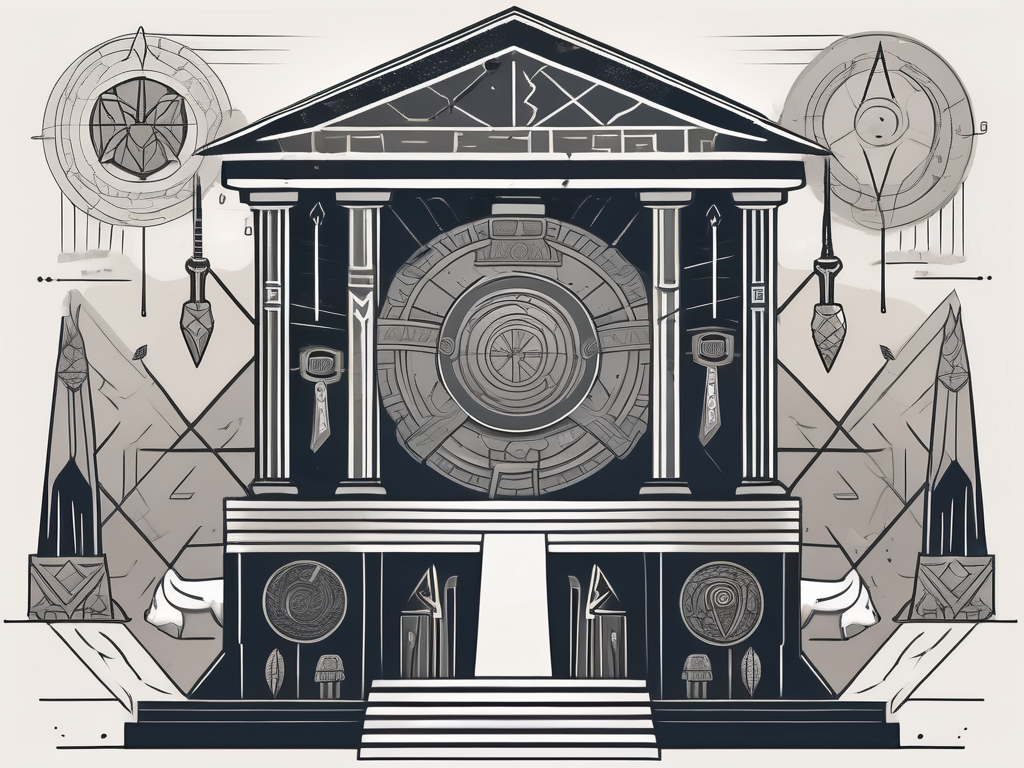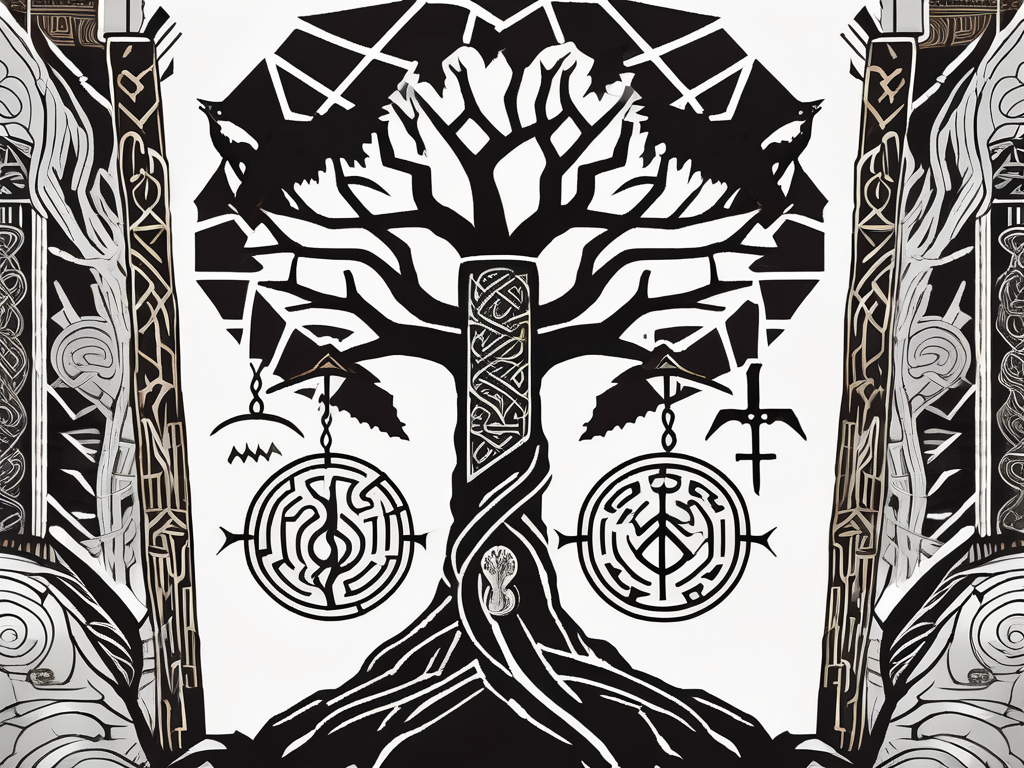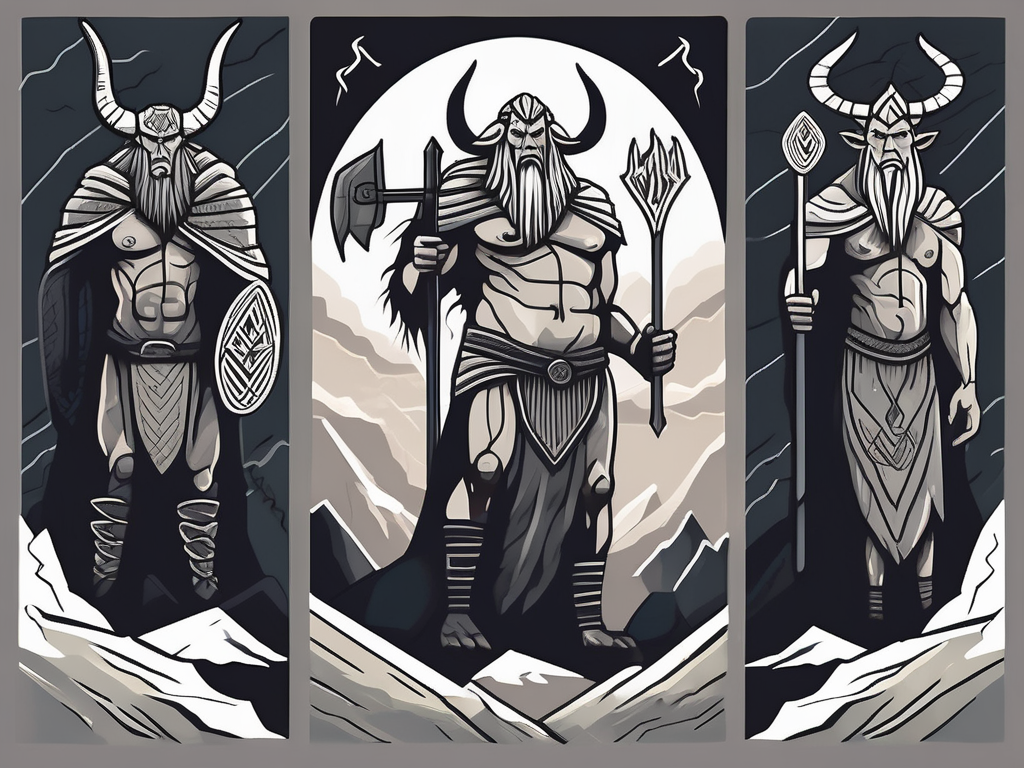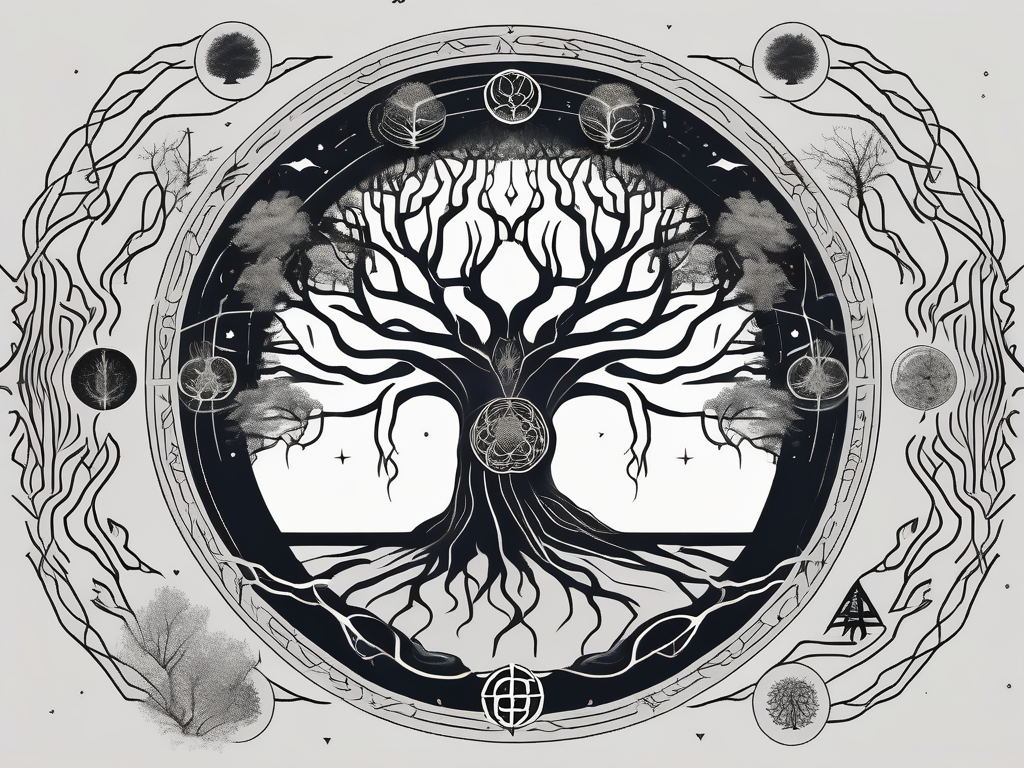Norse mythology, with its rich tapestry of gods, heroes, and epic tales, has captivated the imaginations of people for centuries. At the heart of this fascinating belief system lies the enigmatic world of runes. In this comprehensive guide, we will delve deep into the secrets of Norse mythology runes and uncover their hidden meanings. So, let’s embark on this journey together and shed light on the mysteries that have intrigued scholars and enthusiasts for generations.
Understanding the Basics of Norse Mythology
Before we dive into the realm of runes, it’s important to establish a solid foundation of understanding about Norse mythology. This ancient belief system originated in the Scandinavian region and was deeply woven into the fabric of everyday life for the Norse people. It shaped their worldview, explained natural phenomena, and provided a moral compass for their society.
Norse mythology was not just a collection of stories; it was a way of life. The Norse people believed that their gods and goddesses actively influenced their daily lives, and they sought to appease and honor them through rituals and sacrifices. These rituals were performed in sacred spaces such as temples and groves, where the Norse people would gather to connect with the divine.
The mythology of the Norse people was also intricately connected to their understanding of the natural world. Each god and goddess represented different aspects of nature, such as the sea, the sky, or the earth. By personifying these natural forces, the Norse people were able to make sense of the world around them and find meaning in the cycles of life and death.
The Origin and History of Norse Mythology
To truly appreciate the significance of runes in Norse mythology, we must first explore the origin and history of this ancient belief system. Norse mythology originated from the pre-Christian traditions of the Norse people, dating back to the Viking Age. As a polytheistic religion, it worshipped a pantheon of gods and goddesses who personified various aspects of nature, society, and human characteristics.
The Norse people believed that their gods and goddesses were not distant and detached from humanity, but rather intimately involved in their lives. They saw these divine beings as protectors, guides, and even ancestors. This close relationship between gods and humans was a fundamental aspect of Norse mythology and shaped the way the Norse people interacted with the world.
These mythological stories and folklore were transmitted through oral traditions, passed down from generation to generation. They were eventually transcribed in written form in the medieval period. One of the key literary sources of Norse mythology is the Poetic Edda, a collection of ancient poems that provide insights into the myths, cosmology, and heroic legends of the Norse people.
The Poetic Edda is a treasure trove of Norse mythology, containing tales of epic battles, heroic deeds, and tragic love stories. It gives us a glimpse into the rich and complex world of the Norse gods and their interactions with mortals. Through these poems, we can explore the depths of Norse mythology and gain a deeper understanding of the values and beliefs of the Norse people.
Key Figures and Gods in Norse Mythology
No discussion of Norse mythology would be complete without mentioning the prominent figures and gods that populate this ancient belief system. From the mighty Odin, the Allfather and ruler of Asgard, to the mischievous Loki and the fierce warrior Thor, the gods in Norse mythology possess unique characteristics and play crucial roles in the mythological narratives.
Odin, often depicted as a wise old man with a long white beard, was the king of the gods and the god of wisdom, poetry, and war. He was known for his insatiable thirst for knowledge and his willingness to sacrifice himself for the greater good. Odin’s ravens, Huginn and Muninn, represented thought and memory, and would fly across the world to bring him information.
Loki, on the other hand, was a complex and enigmatic figure. Known as the trickster god, he was both a friend and a foe to the other gods. Loki’s mischievous nature often led him into trouble, but he was also a master of transformation and could shape-shift into different forms. Despite his unpredictable nature, Loki played a crucial role in many of the mythological stories, often causing chaos and disruption.
Thor, the god of thunder and lightning, was one of the most beloved gods in Norse mythology. He was depicted as a powerful warrior with a mighty hammer called Mjolnir, which he used to protect the gods and humans from the forces of chaos. Thor’s strength and bravery made him a symbol of protection and a champion of justice.
One of the most distinctive features of the Norse gods is their mortality. Unlike many other pantheons, the gods are not eternal and are subject to the cycle of life and death. This mortality gives depth and complexity to their stories and makes them relatable to human experiences. It also adds a sense of urgency and impermanence to the mythological narratives, as the gods must constantly strive to maintain balance and order in the world.
As we delve deeper into the world of Norse mythology, we will uncover more fascinating tales and explore the intricate web of relationships between gods, humans, and the natural world. The mythology of the Norse people is a rich tapestry of stories, symbols, and beliefs that continue to captivate and inspire us today.
The Significance of Runes in Norse Mythology
Now that we have a solid understanding of Norse mythology, let’s turn our attention to the significance of runes within this belief system. Runes hold a special place in Norse society, acting as both a practical writing system and a conduit for magical and spiritual practices.
The Role of Runes in Norse Society
In Norse society, runes served as a means of communication and record-keeping. They were inscribed on various objects, from weapons and tools to personal belongings and runestones. As a writing system, runes were used to document important events, relay messages, and convey personal sentiments.
Beyond their functional use, however, runes were imbued with a deeper meaning. They were believed to possess inherent magical qualities and were often associated with mystical powers. Runes were considered runes losophical and metaphysical significance, representing different forces of nature, emotions, and divine powers.
The Symbolism of Runes in Norse Mythology
Each rune in the Norse runic alphabet, known as the Futhark, holds its own symbolic significance. They represent concepts, natural phenomena, and aspects of human existence. For example, the rune Fehu embodies wealth and material abundance, while the rune Ansuz signifies divine inspiration and wisdom.
The symbolic meanings of runes were often interwoven with the mythological narratives of Norse gods and heroes. They acted as a bridge between the mortal and divine realms, allowing individuals to tap into the power and wisdom of the gods through runic divination and magical practices.
Deciphering the Norse Runes
Now that we comprehend the fundamental role of runes in Norse mythology, let’s take a closer look at the runic alphabets themselves. The Norse runic system can be divided into two main branches: the Elder Futhark and the Younger Futhark.
The Elder Futhark: An Introduction
The Elder Futhark is the oldest and most widely recognized runic alphabet. It consists of 24 distinct symbols, each with its own phonetic value and symbolic meaning. The runes in the Elder Futhark correspond to specific sounds and can be combined to form words and sentences.
Understanding the Elder Futhark provides a gateway to exploring the spirituality and wisdom embedded in Norse mythology. By deciphering these ancient symbols, we can unlock hidden layers of meaning and gain insights into the intertwining worlds of gods, humans, and nature.
The Younger Futhark: Differences and Similarities
As the Viking Age progressed, so too did the runic system. The Younger Futhark emerged as a simplified version of the Elder Futhark, consisting of only 16 runes. This transformation mirrored the cultural and linguistic changes occurring within Norse society at the time.
Although the Younger Futhark was a condensed form of the runic alphabet, it still retained the essential symbolic meanings and spiritual significance of its predecessor. The study of the Younger Futhark sheds light on the cultural evolution of the Norse people and provides further insights into their beliefs and practices.
The Connection Between Runes and Norse Mythology
With a firm understanding of the runic alphabets, we can now explore the fascinating connection between runes and Norse mythology. Runes were not only present in the mythical tales and legends but also played a vital role in the magical practices and rituals of the Norse people.
Runes in Norse Sagas and Tales
A vast array of Norse sagas and epics depict the use of runes in various contexts. These stories laced with mythical adventures and heroic deeds often feature runes as a source of power, prophecy, and protection. From the epic saga of Sigurd the Dragon Slayer to the mystical runes inscribed on the ancient sword Gram, runes are intricately interwoven into the fabric of Norse mythological narratives.
Runes and Norse Magic
Runes are closely associated with Norse magic, a fundamental aspect of this ancient belief system. Norse magic, also known as seidr, encompassed a wide range of practices that involved divination, healing, and manipulating natural forces. Runes were instrumental in these magical endeavors, serving as a medium through which individuals could harness and channel the supernatural powers of the gods.
The Modern Interpretation of Norse Runes
As we fast forward to the present day, Norse runes continue to capture the interest and imagination of many. While their practical use as a writing system has diminished, their symbolic meanings and spiritual significance endure.
Runes in Contemporary Culture
The legacy of Norse mythology runes can be seen in modern culture, ranging from literature and art to tattoos and jewelry designs. Many individuals are drawn to the ancient wisdom and mystery associated with these runic symbols. By incorporating runes into their lives, they seek to forge a connection with the past and tap into the profound knowledge and energy contained within these sacred symbols.
The Use of Runes in Modern Divination Practices
Divination is a practice that has stood the test of time, offering insights and guidance from the unseen realms. In contemporary society, runes continue to be used as a tool for divination. Runecasting, the act of drawing and interpreting runes, enables individuals to tap into their intuitive abilities and receive guidance on matters of the heart, career, and spiritual growth.
Unlocking the secrets of Norse mythology runes is a doorway to a world filled with ancient wisdom, mythical tales, and mystical powers. Through the exploration of their origins, symbolism, and connection to Norse mythology, we can gain a deeper understanding of the profound impact these sacred symbols have had and continue to have on our collective consciousness.
So, take a leap into this realm of mystery and delve into the world of Norse mythology runes to uncover their hidden meanings and unleash their transformative power in your life.
